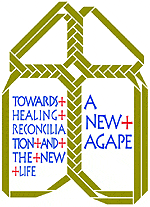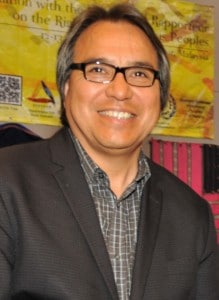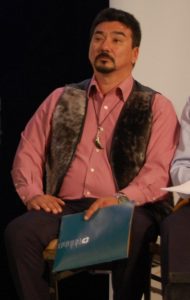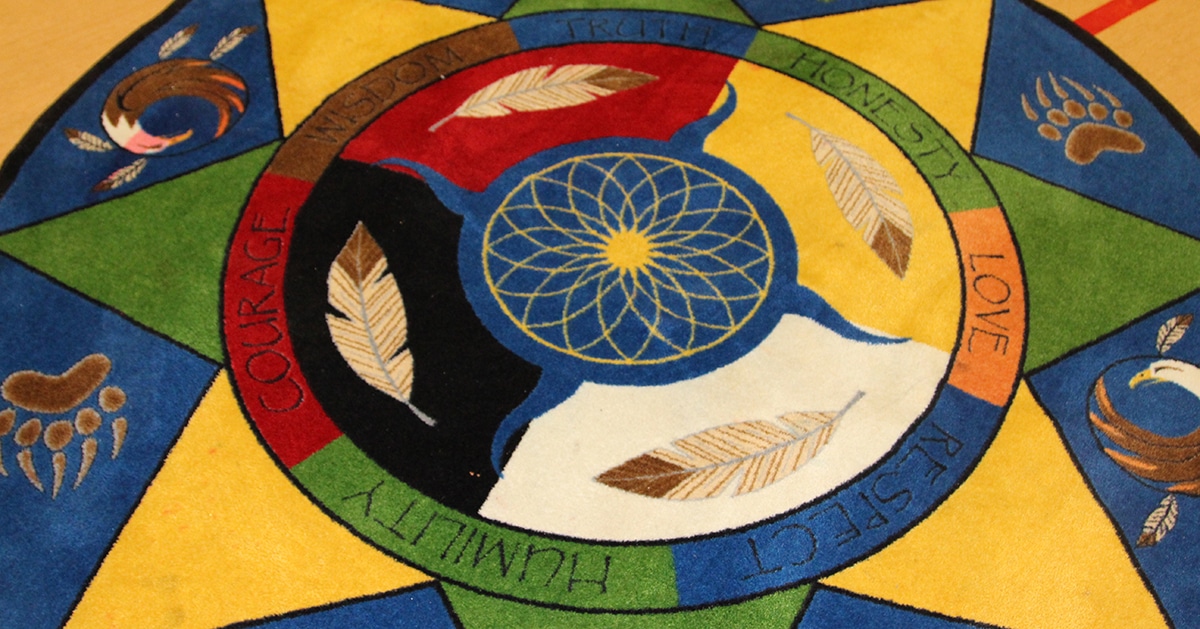Following reflections by leaders of the Anglican Church of Canada, plans are underway to begin addressing the 94 recommendations of the Truth and Reconciliation Commission (TRC). Yet there is no shortage of immediate opportunities for church members to learn more and take action in solidarity with Indigenous peoples.
In responding to the TRC recommendations, the church will be focused both inwardly and towards the larger community with its ecumenical partners in KAIROS Canada and the Ecumenical Working Group.
The Aug. 16-22 meeting in Port Elgin, Ont. of the Sacred Circle—the national gathering of Indigenous people from across the Anglican Church of Canada—will mark one of the first major occasions for the church to begin planning its response to the TRC Calls to Action.
In September, Archbishop Fred Hiltz, Primate of the Anglican Church of Canada, will convene an internal meeting at Church House in Toronto with General Secretary Michael Thompson, National Indigenous Anglican Bishop Mark MacDonald, and General Synod staff members to begin the process of sifting through and prioritizing the 94 Calls to Action.
Also in Toronto, the fall meeting of the Ecumenical Working Group in early October will allow Anglicans a forum to discuss the Calls to Action they have decided are most important for their own church and others to focus on, while allowing other denominations to do the same.
Oct. 4 has been designated as a national day of vigils to remember and honour missing and murdered Aboriginal women and girls—part of the Sisters in Spirit campaign organized by the Native Women’s Association of Canada.
Since Oct. 4 falls on a Sunday, over the course of the summer, the Anglican Church of Canada will develop liturgical resources specifically designed for the occasion. Worship resources will be posted online in early September.
In November, KAIROS will hold a two-day gathering in Ontario that will further buttress the ecumenical approach to both the TRC’s Calls to Action and the United Nations’ 2007 Declaration on the Rights of Indigenous Peoples.
Along with such upcoming events, the church will continue its work towards healing and reconciliation through education. In early July, for example, the Cathedral Church of St. James in Toronto will launch a special historical exhibit in the cathedral honouring truth and reconciliation in time for the Pan Am Games.
A selection of resources can be seen below:
Learning
- Read the churches’ response to the TRC Calls to Action
Study suggestion: Review the TRC’s Calls to Action with a group and discuss which ones call your parish or diocese to greater study and action.
 Worship resources: “A New Agape” and A Covenant and our Journey of Spiritual Renewal, 1994
Worship resources: “A New Agape” and A Covenant and our Journey of Spiritual Renewal, 1994
- Read the histories of residential schools, learn about the Anglican Healing Fund and other ways in which our church is committed to work on truth and reconciliation
Study suggestion: Obtain a copy of the “Indigenous Peoples and the Anglican Church in Canada: Timeline of an Evolving Relationship” and study and discuss your insights with a group.
- Take part in the KAIROS Blanket Exercise, an excellent group educational resource about Canada’s Indigenous-settler history for parishes, study groups of all ages, and classrooms.
Missing and murdered Indigenous women
- Truth and Reconciliation Commission Final Report, Calls to Action #41, June 3, 2015—“We call upon the federal government, in consultation with Aboriginal organizations, to appoint a public inquiry into the causes of, and remedies for, the disproportionate victimization of Aboriginal women and girls. The inquiry’s mandate would include: i. Investigation into missing and murdered Aboriginal women and girls. ii. Links to the intergenerational legacy of residential schools.”
- Final report of UN Special Rapporteur James Anaya on the rights of Indigenous peoples in Canada, July 4, 2014.

An excerpt: “Missing women and girls—89. Bearing in mind the important steps already taken to inquire into the disturbing phenomenon of missing and murdered aboriginal women and girls and to develop measures to address this problem, the federal Government should undertake a comprehensive, nationwide inquiry into the issue of missing and murdered aboriginal women and girls, organized in consultation with indigenous peoples.”
Aboriginal women and girls have been documented as missing and murdered since the late 1960s. Communities have pointed to the high numbers and have struggled for justice.
- Updated findings on missing and murdered Aboriginal women by the RCMP, June 19, 2015
- These updated findings build on the RCMP National Operational Overview, May 2014. Note: When using data, please consider the need for careful data interpretation and take into consideration the perspective of First Nations, Métis and Inuit communities.

According to Terry Audla, president of Inuit Tapiriit Kanatami, Canada’s national Inuit organization, “…it is only by accepting this as a Canadian issue, not only an Aboriginal issue, and by working together that we will see change in the future… Those efforts should include a careful look at issues specific to Inuit communities…including the level of services offered in the North and the lack of safe shelters in the 53 communities that made up Inuit Nunangat [homeland territory].”
The Native Women’s Association of Canada (NWAC) has been the national voice of Aboriginal women since 1974. NWAC’s mandate is to “achieve equality for all Aboriginal women in Canada. [It] is actively involved with partner organizations across the globe towards this goal, including the United Nations and Amnesty International to end the discrimination against Indigenous women.”
Interested in keeping up-to-date on news, opinion, events and resources from the Anglican Church of Canada? Sign up for our email alerts .

